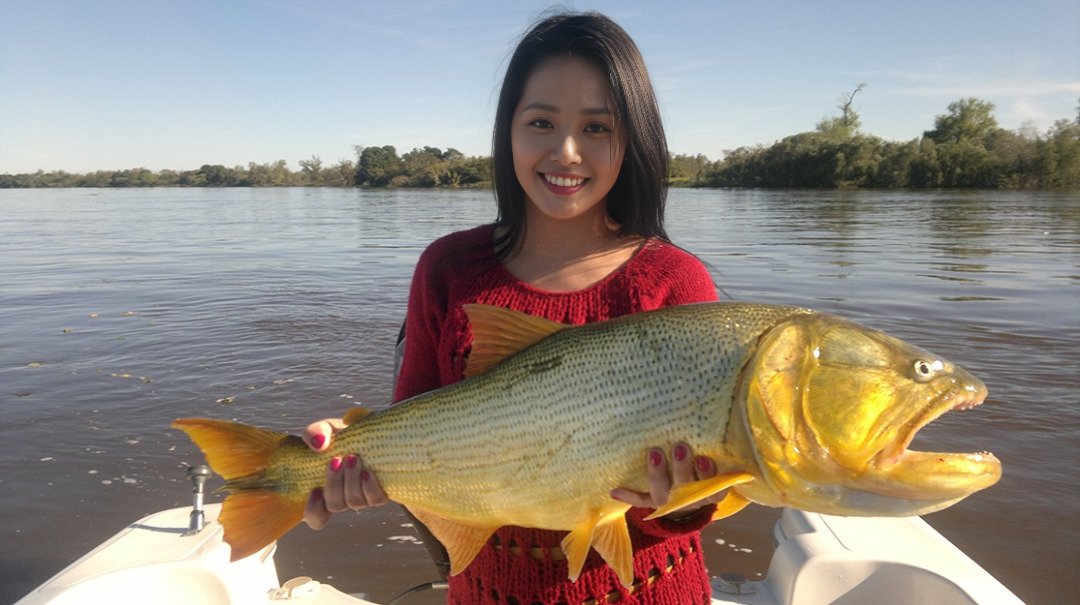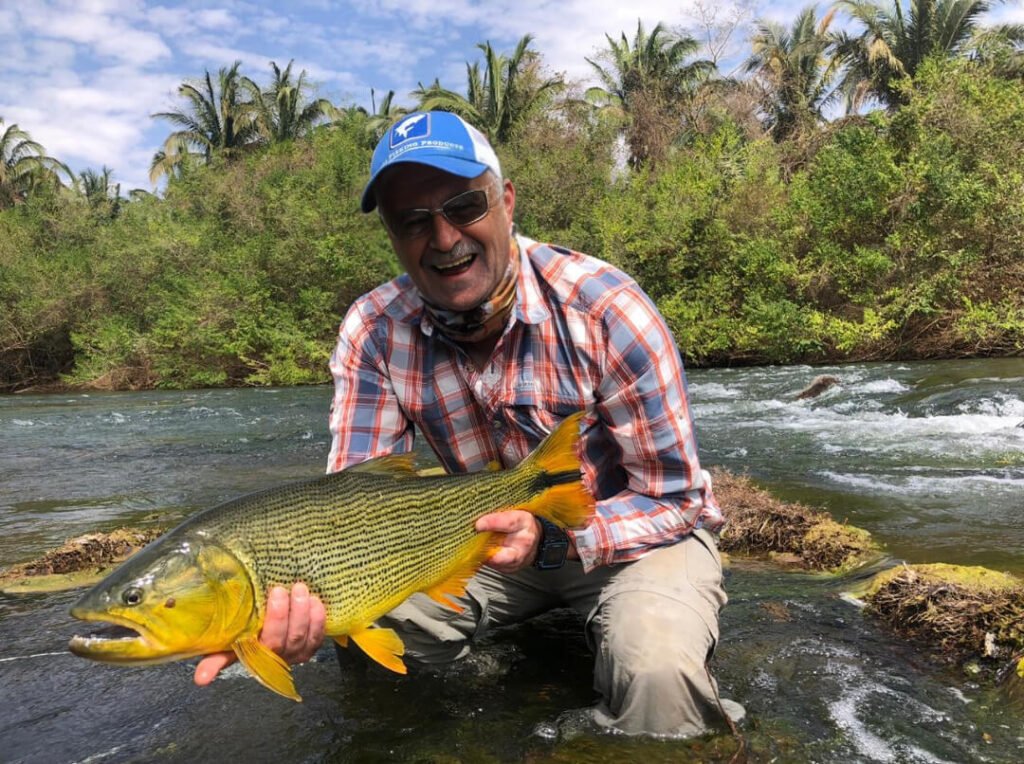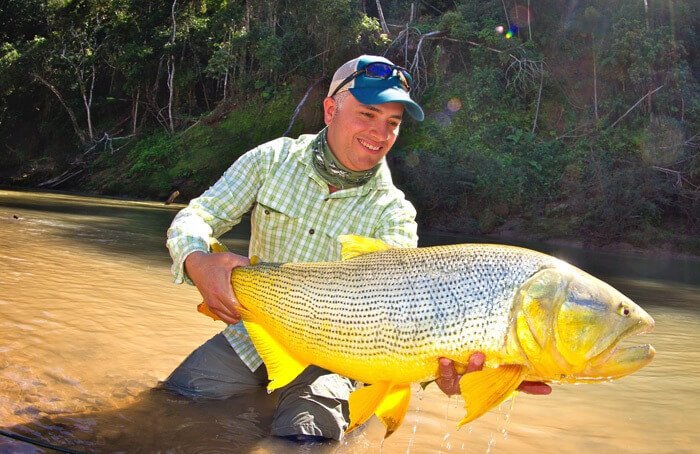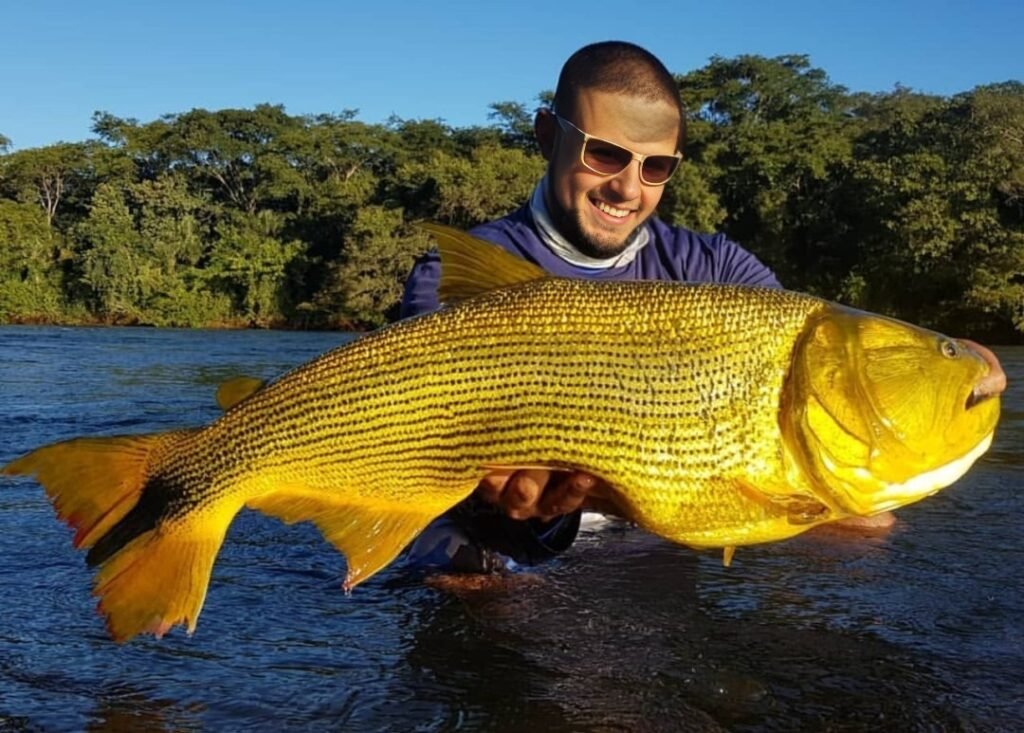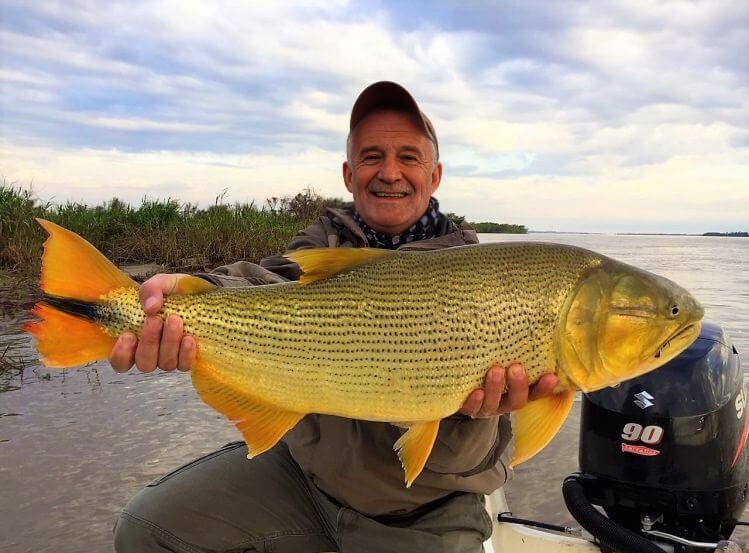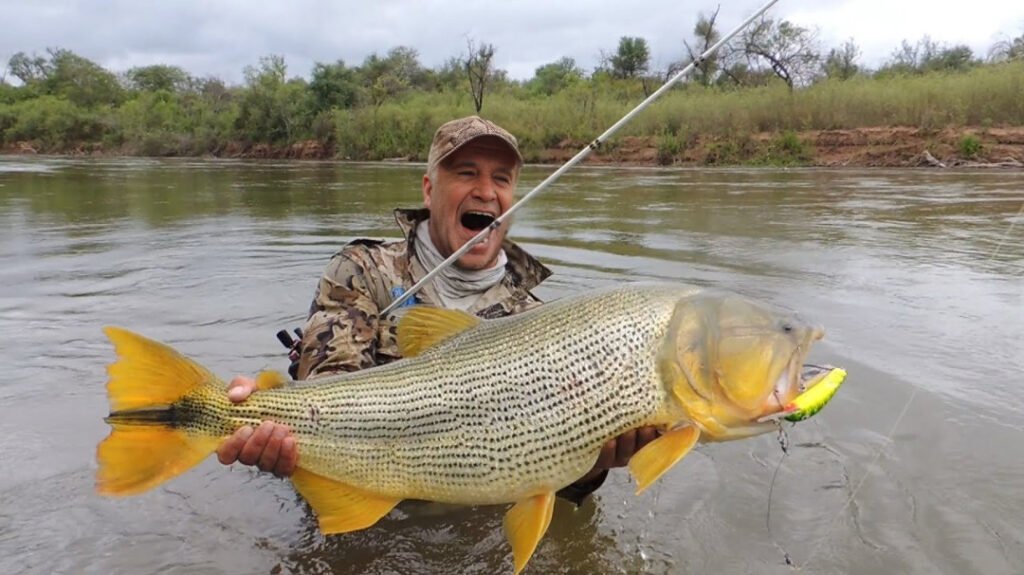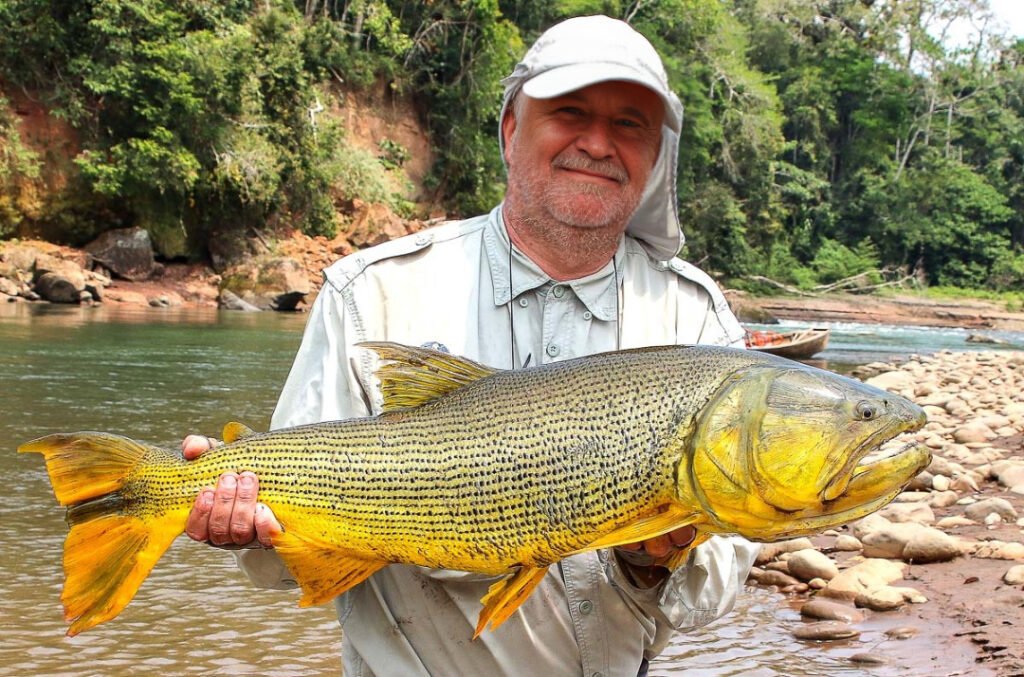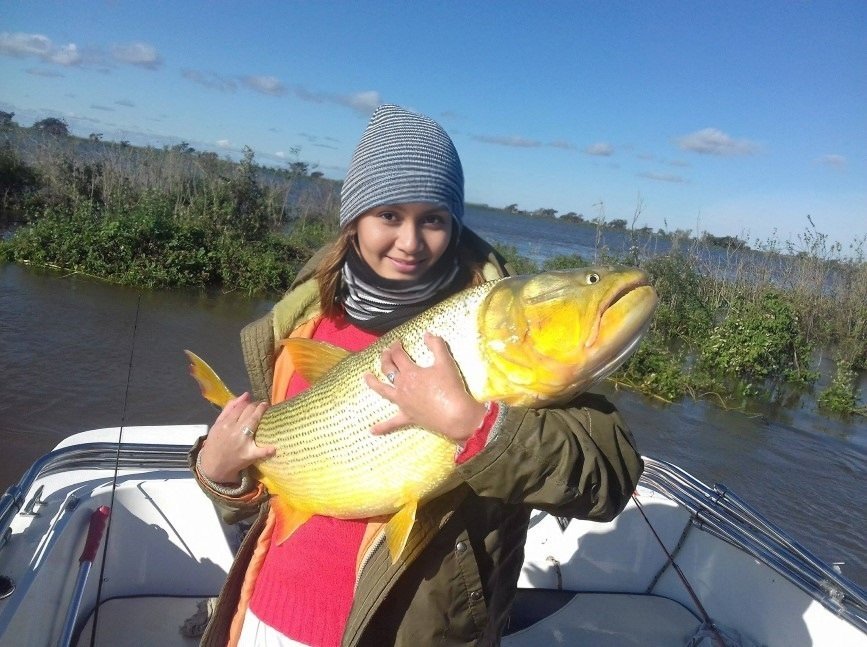The dorado, also known as Salminus brasiliensis, is one of the most sought-after fish for sport fishermen in South America. This powerful and beautiful river predator is not only recognized for its unmistakable metallic golden color but also for its incredible strength and ability to provide an exhilarating fight. In this article, we’ll explore the best dorado sport fishing techniques, so you can enjoy the experience to the fullest while respecting the ecosystem and focusing solely on the sport, not the commercial sale of its meat.
Why is dorado fishing so popular in sport fishing?
The dorado: A formidable opponent
The dorado is an iconic fish of the large rivers in South America, such as the Paraná, Uruguay, and Paraguay rivers. This fish can reach impressive sizes, with some specimens exceeding 20 kg, making it one of the most coveted sport fish. Its aggressive behavior and its ability to perform spectacular jumps out of the water make it especially attractive for sport fishermen seeking an adrenaline-filled challenge.
Conservation of dorado in sport fishing
It’s important to note that due to its ecological importance and value as a sport species, many regions have implemented catch-and-release regulations to protect dorado populations. This allows anglers to enjoy the thrill of fishing without harming the natural balance of the ecosystem.
Dorado fishing techniques in South American rivers
1. Fishing with artificial lures
Fishing with artificial lures is, without a doubt, one of the most popular and effective techniques in dorado sport fishing. Artificial lures mimic the behavior of the fish that dorado typically prey on, and they can trigger its natural aggressiveness.
Recommended types of lures
- Crankbaits: These lures are known for their vibrations and fast movements, which imitate the small fish that are dorado’s prey.
- Poppers: Surface lures that create splashes when retrieved, mimicking injured fish that attract the attention of dorado.
- Minnows: With their slim and realistic profile, they are ideal for clear waters where dorado hunt visually.
How to use lures correctly
Success with artificial lures largely depends on the retrieval technique. The movement should be fast and erratic, simulating prey in distress. Casting upstream and retrieving downstream allows the current to make the lure move naturally. It’s also important to experiment with speed and casting angles, as dorado tend to ambush when the lure crosses into their territory.
2. Fly fishing
Fly fishing is an advanced technique that offers an exciting challenge for sport anglers. Although dorado are most commonly caught using artificial lures, they can also be tricked with large streamers and other flies that imitate small fish.
Recommended fly fishing equipment
To catch dorado on the fly, you’ll need the right gear:
- Fly rod: Weight 8 or 9, capable of withstanding the power of a fighting dorado.
- Floating or intermediate line: Ideal for casting large streamers that attract this predator.
- Streamers: Imitations of fish like sardines or mojarras, which are part of dorado’s diet. Large, flashy streamers tend to be more effective.
Effective fly fishing techniques
The key to this technique lies in precise casting and proper fly presentation. The best spots to cast are areas near vegetation and underwater structures, where dorado usually lie in wait for prey. It’s also essential to vary the speed of fly retrieval, as dorado often respond better to fast, erratic movements that simulate a wounded fish.
3. Fishing with live bait
While the use of artificial lures and flies is the norm in sport fishing, live bait fishing remains a traditional and highly effective technique, especially for those looking to catch large specimens. Using live fish as bait mimics dorado’s natural diet, increasing the chances of success.
Ideal live bait
- Mojarras: Very effective in attracting dorado due to their size and natural movement.
- Small sardines: Another popular bait used to catch large dorados.
How to use live bait
It’s important to hook the bait in a way that allows it to move naturally in the water. Dorado is a visual hunter and is more likely to attack bait that appears alive and distressed. Areas near rocks, submerged branches, and current changes are the best places to cast live bait.
Botón de Reserva
When is the best time for sport fishing dorados?
Seasonal factors
Dorado is more active during warmer months, as it prefers waters with higher temperatures. This means that the spring and summer seasons are ideal for sport fishing, when dorados are more aggressive and willing to strike at lures or live bait.
Most effective times of day
Dawn and dusk are the best times for dorado fishing. During these hours, dorado is actively hunting, especially near the surface. During the peak sunlight hours, however, it tends to hide in deeper areas or under the shade of aquatic vegetation.
Additional tips to improve your dorado fishing skills
Know your fishing environment
Every river has its unique characteristics, so it’s crucial to get to know the areas where dorado are most frequently found. Look for zones with strong currents, whirlpools, or waters near dense vegetation, as dorado tend to hunt in these areas.
Adjust your gear according to water conditions
If the water is clear, you can opt for smaller, more realistic lures and flies. In murkier waters, larger and more brightly colored lures may better attract dorado’s attention.
Patience and observation
Dorado doesn’t always bite quickly, so patience is key. Observe the fish’s behavior and adjust your technique based on its reactions.
Common mistakes to avoid in dorado sport fishing
Using inadequate equipment
Dorado is an incredibly strong fish, so using a rod or reel that’s too weak can ruin a catch. Make sure you have equipment that can withstand the power of this fish, especially if you’re targeting large specimens.
Underestimating the fish
Even smaller dorados provide an intense fight. It’s important to be prepared and not force the line too much, as dorado is known for its ability to jump out of the water, which can cause the line to snap if not handled carefully.
Botón de Reserva
Frequently Asked Questions about Dorado Fishing Techniques
1. What is the best season for dorado fishing?
Spring and summer, when dorado is more active due to warmer water temperatures.
2. Is it difficult to fly fish for dorado?
It’s a challenge, but with the right equipment and precise technique, it’s possible to be successful.
3. What is the most effective live bait for dorado?
Mojarras and small sardines are the most commonly used baits because they mimic dorado’s natural diet.
4. Can I fish for dorado all day?
While dorado can be caught throughout the day, the best times are at dawn and dusk when they’re more active.
5. What size can dorado reach?
Some dorados can exceed 20 kg, although it’s common to find specimens between 5 and 10 kg.
6. Is it mandatory to release dorado after catching it?
In many areas where dorado is considered a sport fish, it’s recommended or required to practice catch-and-release to preserve the species.
Dorado sport fishing is an exhilarating experience that offers a true challenge for anglers of all levels. Whether you use artificial lures, flies, or live bait, this powerful fish never ceases to amaze with its strength and agility. With the right techniques and a focus on conservation, you can enjoy dorado fishing while helping to preserve this valuable natural resource for future generations.
Botón de Reserva
Don’t miss the opportunity to live the sport fishing adventure you’ve always dreamed of! At Lorenzo Expeditions, we are experts in providing you with an unforgettable experience chasing the majestic dorado. What are you waiting for? Contact us today and secure your fishing trip with the best sport fishing company!
